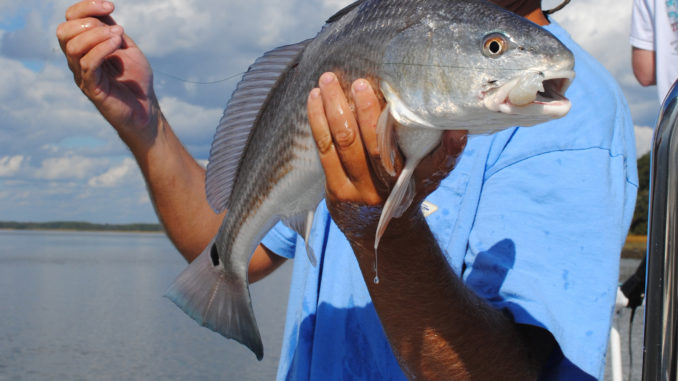
Although there may be a grey cloud or two on the horizon, anglers should finish this coming saltwater season with big smiles on their faces.
South Carolina is blessed with an abundance of excellent saltwater habitat, even if it doesn’t have as extensive a coastline as some states.
The state’s fisheries are among the best in the Southeast, in part because the S.C. Department of Natural Resources has shown tremendous forethought in how some species are managed and protected.
But things aren’t always hunky dory every year, for every fish species. At least one popular bluewater species, the yellowfin tuna, has been missing in action for several years. A couple of popular inshore species, speckled trout and flounder, have seen better times, but for different reasons.
So when you get ready to head to the coast this year, it’s good to know what species you’ll be better served targeting. Here is an overview of what’s up:
Redfish
Fishermen can expect to find plenty of redfish in the state’s marshes, bays, sounds and coastal streams.
Mike Denson, a biologist with the S.C. Department of Natural Resources’ marine division, said that excellent year-classes spawned in 2008 and 2009 will be entering the fishery this year, giving fishermen plenty of targets.
“The redfish population seems to be up. All the data suggests that we have a couple of strong year-classes in the past couple of years,” Denson said. “A lot of those fish will be in the slot, and fishermen will be able to take them.”
Denson said biologists won’t know about the 2011 year-class until next fall, but indications are, the existing stocks should carry the day for a couple more years; fish stay in the 15- to 23-inch slot about 18 months before they grow out of it.
Denson said SCDNR has been stocking the Charleston Harbor area in recent years, specifically the Ashley River, and it’s looking to change locations in coming years.
“Those fish do contribute in specific locations to the year class, but it’s tough to outdo Mother Nature,” he said. “A good, strong wild year-class of class is hard to beat.”
Speckled trout
It’s too early to tell how long it’s going to take for speckled trout to recover from the cold-weather kills from the 2010 and 2011 winters, according to Denson.
“The ‘Let-em-spawn, Let-em-live” program we had last year was encouraging because of the number of recreational fishermen who released fish and let them live through the spawn,” Denson said. “We had a lot of participants; most recreational fishermen practiced a lot of catch-and-release with trout, and a lot of the tournaments didn’t have their usual trout categories.
“The fish that spawned from those adults that lived through last winter will be in this year’s year class.”
Denson said SCDNR’s data suggested that 80 percent of the state’s speckled trout didn’t make it through last winter, when several weeks of extremely cold weather drove the water temperature into the low 40s, levels that stun or kill specks. The number of specks caught in biologists’ samplings last spring was the lowest on record, and the absence of specks was noted in all nine of South Carolina’s major coastal estuaries, from Little River to the Georgia line.
Fortunately, speckled trout are a fast-growing, short-lived species that can replenish from a widespread cold-water kill in just a few years.
“The fish that lived through last winter could have spawned as early as April, and those fish will be 12 to 13 inches long by this April or May, and bigger by the end of the year,” Denson said. “They grow very quickly.”
Denson said that if the relatively mild winter of 2011-2012 continues and there are no cold-weather stuns or kills, he expects a good spawn this year and a good year-class of fish a couple of years down the road. Sampling this spring should provide him with an idea of what reproduction might be like later this year. A lot of “spike” trout this fall will point to good seasons in the future.
SCDNR data indicates that it took the speckled trout population five years to completely rebuilt itself after a similar cold-stun kill in 2001.
Flounder
Southern flounder are another species that is of concern to biologists. Denson said that landings — and population numbers — have been decreasing since 2000.
“Most fishermen will tell you just about the same thing,” he said.
SCDNR has taken steps to reduce creel limits for hook-and-line and giggers, hoping to take the edge off the drop, but results can’t be substantiated yet, and if they can, there’s no telling whether they matter or not.
“Internally, we’re talking about what it is that’s causing the problem,” he said. “We’re not sure if it’s environmental concerns driving the numbers up or down, whether combined with overfishing that’s doing it.”
Sheepshead
Denson said that South Carolina’s sheepshead fishery seems to be in “fairly good shape” with a hint of an “uptick” over the past couple of years.
The fishery will fall under the management of SCDNR this year when they’re released from federal jurisdiction, and Denson expects them to be managed with a recreational creel or boat limit and some kind of minimum size limit to keep the species rolling along – and the requirement to target them with circle hooks will likely fall by the wayside.
“As soon as sheepshead are released from federal management, they’ll be open to commercial fishing with no limit, and their could be a problem with the fish aggregate to spawn around inshore reefs,” he said. “We’ve been kicking around ideas for a bag limit or boat limit, but nothing’s been decided. I think they’re talking about a 12-inch (fork-length) or 14-inch (total length) size.”
Shrimp
Like speckled trout, the white shrimp that thousands of South Carolina residents target during the fall shrimp-baiting season are a bit of a question mark. Their numbers took a huge hit during the bitter-cold winter of 2011, according to biologist Larry DeLancey of SCDNR.
“They’re okay right now; our winter hasn’t been cold enough to do any damage,” DeLancey said. “They have come back pretty well from the cold, but numbers are not great. If we get a decent spawn in the spring, we could be getting a good year-class of shrimp.”
Beyond a mile winter, the best weather pattern for shrimp will be a nice, wet spring and summer. DeLancey said the drought-pattern South Carolina has suffered through over the past handful of years isn’t a good one for shrimp.
“They need rain,” he said. “But if we get through the winter without any long-term cold weather, this could be a pretty good fall.
“Right now, it looks a lot better than it did last year.”
DeLancey said that shrimp numbers fell in almost every location SCDNR sampled last year.
Tuna
Fishermen haven’t weighed in a yellowfin tuna in the S.C. Governor’s Cup Billfish Series since 2006, which presents a very accurate portrait of the state of the big, strong tuna off the Palmetto State’s coastline.
Wallace Jenkins, who handles the Governor’s Cup for SCDNR, said yellowfin landings are off even in North Carolina, where the Gulf Stream waters the tuna spend most of their time swing close enough to the shoreline to put them within range of lots and lots of boats.
“I think it’s like what we went through when we didn’t have a lot of red drum a few years ago,” Jenkins said. “People could still catch them in their preferred habitat. As our population started to recover, they were more widely distributed.”
In other words, as the tuna population shrunk – Jenkins said they’re being overfished on the eastern side of the Atlantic Ocean – the remaining fish retreated into the habitat the love the most: the azure-blue waters of the Gulf Stream.
Blackfin tuna have been a good substitute and should continue to make up almost 100 percent of the tuna that find their way back to port from offshore waters.
Dolphin/Wahoo
Two of South Carolina’s more popular bluewater species are dolphin (mahi-mahi) and wahoo, and neither seems to be in too much trouble, according to Jenkins.
Landings of wahoo have been down in the past several Governor’s Cup Series, he said, but that is most likely the result of more fishermen using circle hooks, and the fact that wahoo are more prevalent in the spring and fall than during the summer when the billfish tournaments are held.
Dolphin continue to be the big meatfish taken from South Carolina’s offshore waters, and Jenkins said there hasn’t been any big move, one way or the other, in species numbers.
He does expect, however, that the South Atlantic Fisheries Management Council will introduce a size limit to go with the 10-fish daily creel limit sometime this year to protect the species from any perceived overfishing.
Fishermen in Georgia and Florida adhere to a 20-inch size minimum on mahi-mahi; that protects the very small “flinger” or “shingle” dolphin.
Cobia
Cobia is one of the favorite fish of anglers along the coast during the spring spawning run; the accumulation of fish in Port Royal Sound and the Broad River is among the best fisheries along the South Atlantic coast.
Denson said the fishery has been driven the last several years by a huge year class spawned in 2004. “It’s probably making up 15 percent of our catch right now,” he said. “Those fish probably weight 40 to 50 pounds right now.
“We haven’t seen a strong year-class since those fish were spawned, but we think the fishery is probably driven by a strong year-class about once every decade,” he said. “It’s driven our catch the past few years, and we expect it to contribute several more years.
“We want to see if we get another strong year-class coming along. We could have had one the past one or two years, but we don’t see those fish until they’re two or three years old. It takes them about three years to reach the 33 inches (the size minimum).

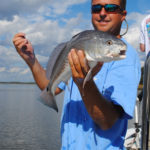
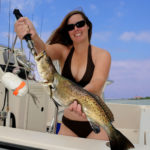
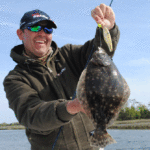
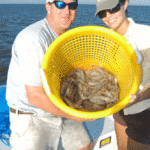
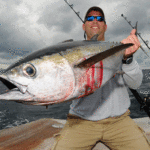
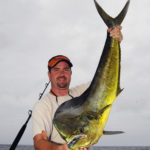
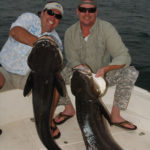

Be the first to comment